The South American gauchos, brought to the Falklands to work the wild cattle have left a legacy of the Spanish/ criollo system of naming horse colours (and horse gear) accurately. Many words have been changed slightly to a Falklands version over the years.
|
LISTA
Lista describes the white mark or blaze down a horse’s face, it being no wider than a man’s two fingers.
Thus a horse might be described as gateado lista blanca, colorado lista blanca etc. |
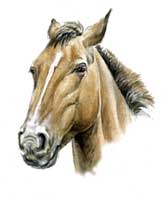 |
| Should the white stripe only reach part way down the horse’s face then it is described as lista perdida. |
 |
| Where the stripe runs off to a definite left or right of the bridge of the face this is lista tuerta. |
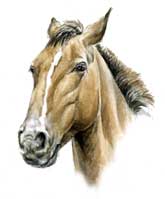 |
| If there are just a few white hairs on the forehead this is termed pelos blancos. |
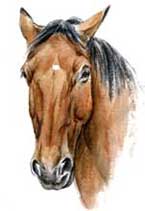 |
A small (2-3 cm or 1 inch) roughly round shaped spot or star is estrella.
A larger white spot on the forehead is called lucero and if it is heart shaped it is a corazon.
|
 |
| Malacara describes a star with that extends down the nose. |
 |
| A wide white, bald face is termed Pampa, this may be accompanied by a zarco eye. |
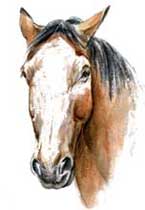 |
| Pico blanco describes a horse face with a white nose. |
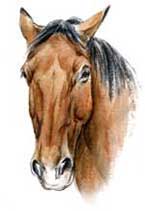 |
ZARCO EYE
Most large Falkland Islands sheep stations had one or more horses with a ‘Zarco’ eye (and usually a few dogs as well).
 This is caused by a lack of pigmentation in the iris, typically just of one eye, resulting in the eye appearing a pale blue. This is usually combined with white lashes giving the whole face a strange appearance.
This is caused by a lack of pigmentation in the iris, typically just of one eye, resulting in the eye appearing a pale blue. This is usually combined with white lashes giving the whole face a strange appearance. |
 |
Sources: Pelajes Criollos- Emilio Solanet, Vocabulario Y Refranero Criollo- Tito Saubidet, Horse Color Explained- Jeanette Gower,The Color of Horses - Dr Ben K. Green, but mostly learned from Chris Perry |
    
|

